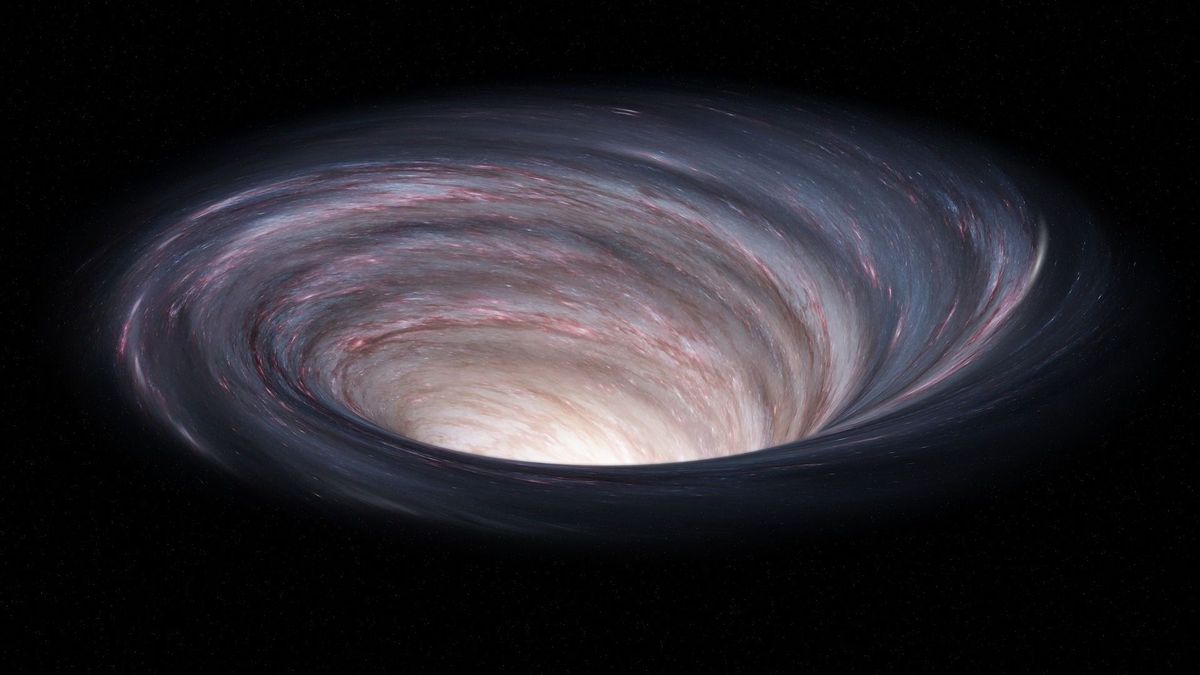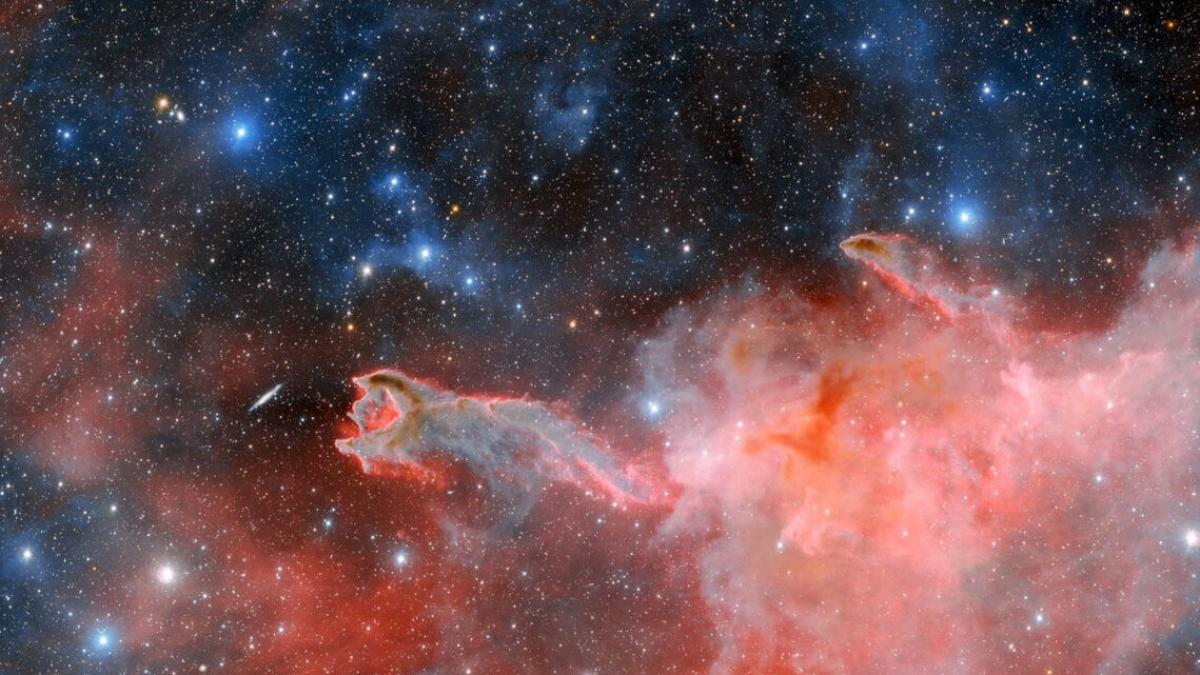Classic and durable Hubble Space Telescope, A joint task Pot And this European Space Agency It has completed 34 years of service and continues to amaze scientists for its beautiful observations of the vast universe.
A powerful space lab Opened On board the space shuttle Discovery on STS-31 On April 24, 1990, Planned to last 15 years, its duration has been extended more than twice.
To celebrate these 34 years, distant astronomers captured its snapshot The Small Dumbbell Nebula is also known as Messier 76 or M76. Located 3,400 light-years away in the northern circular constellation of Perseus. A stunning new image of bright gas ejected by a dying star, in this case looks like “”.Cosmic Dumbbell”.
M76 is classified as a planetary nebula, an expanding shell of bright gas ejected from a dying red giant star. The star eventually collapses and becomes a hot, ultradense white dwarf. A planetary nebula is not associated with planets, but gets its name because 18th-century astronomers, using low-powered telescopes, thought this type of object looked like a planet.
Planetary nebulae usually have a circular structure, as they first resembled planets forming discs when they were first discovered by French astronomer Charles Messier in 1764.
Pierre Méchain discovered the nebula Little Bell in 1780 And astronomers first observed it in detail in 1891. Since then, this photogenic nebula has been a favorite of professional and amateur astronomers due to its unique shape.
M76 consists of a ring, Two lobes in each annular opening, found on the rim as a central band structure. Before the star burns out, it ejects a ring of gas and dust. The ring may have been carved by the effects of a star that once had a binary companion.
This displaced object created a dense disk of dust and gas in the plane of its companion's orbit. The hypothesized companion star was not seen in the Hubble image, therefore It may have been swallowed later by the central star. The disc would be forensic evidence of that interstellar cannibalism.
The progenitor star collapses to form a white dwarf. It is one of the hottest stellar remnants at 250,000 degrees Fahrenheit, 24 times the surface temperature of our Sun, and can be seen as a point in the center of the nebula. A star visible in the plan below it is not part of the nebula.
stuck on disk, Above and below the “belt” two hot gases escape. with the star's axis of rotation perpendicular to the disk. They are driven by a hurricane-like flow of material from a dying star hurtling through space at 3.2 million kilometers per hour. It is fast enough to travel from Earth to the Moon in seven minutes.
This “stellar wind” collides with cooler, slower-moving gas It was ejected at an earlier stage in the star's life when it was a red giant. The intense ultraviolet radiation from the superhot star causes the gases to glow. Red color comes from nitrogen and blue from oxygen.
Given Our solar system is 4.6 billion years old, and the entire nebula is just a blip in the cosmological history of time.. It will disappear in another 15,000 years. If researchers can confirm that the nebula contains evidence of cosmic cannibalism, it could prove a long-theorized companion to the red giant.
The companion star, once orbiting the red giant, does not appear in the Hubble image. According to a NASA report, Astronomers believe that the red giant swallowed its companion Also, by studying the ring, they can obtain “forensic evidence” of this act of cosmic cannibalism.
Since its collapse, the red giant star has become a dead stellar remnant known as an ultradense white dwarf star. The white dwarf has a temperature of 138,871 degrees Celsius, which is 24 times hotter than the surface of our Sun and one of the hottest white dwarf stars known.
Since its launch in 1990, Hubble has made 1.6 million observations of more than 53,000 astronomical objects. To date, the Mikulsky Archive for Space Telescopes at the Space Telescope Science Institute in Baltimore, Maryland contains 184 terabytes of processed data, ready for use in research and analysis by astronomers around the world.
Over 44,000 scientific papers have been published based on Hubble observations. The space telescope is the most scientifically productive space astrophysics mission in NASA history. Demand for Hubble's use is so high that it is currently outnumbered six to one.
Most of Hubble's discoveries were not anticipated prior to launchSupermassive black holes, atmospheres of exoplanets, gravitational lensing of dark matter, existence of dark energy and abundant planet formation among stars.
Hubble will continue research in these domains and reap the rewards Its unique ultraviolet light capability on topics such as solar system phenomena, Supernova explosions, mixing of exoplanet atmospheres and dynamic emission of galaxies. And Hubble research continues to benefit from long observations of solar system objects, interstellar variable events, and other exotic astrophysics of the universe.
“The space telescope is the The most scientifically productive space astrophysics mission in NASA history”, According to a NASA report.
Hubble and The James Webb Space Telescope They work complementary to each other, As astronomers try to unravel the mysteries surrounding supernovae, distant galaxies, exoplanets, and other celestial oddities, they collect observations of different wavelengths of light for a sharper, deeper view of the universe.
NASA's James Webb Space Telescope is designed to be a parallel to Hubble, not a replacement. There will also be future Hubble research Webb will take advantage of the opportunity to create synergiesObserving the universe in infrared light.
The combined wavelength coverage of the two space telescopes expands exciting research into areas such as protostellar disks, the composition of exoplanets, unusual supernovae, galactic nuclei, and the chemistry of the distant universe.

:quality(85)/cloudfront-us-east-1.images.arcpublishing.com/infobae/MNC54VXNEZFZRNQPRR5NB7S774.jpg)



:quality(85)/cloudfront-us-east-1.images.arcpublishing.com/infobae/YVT2WGE5YVGEJASYQ7JKEUNCWU.jpg)